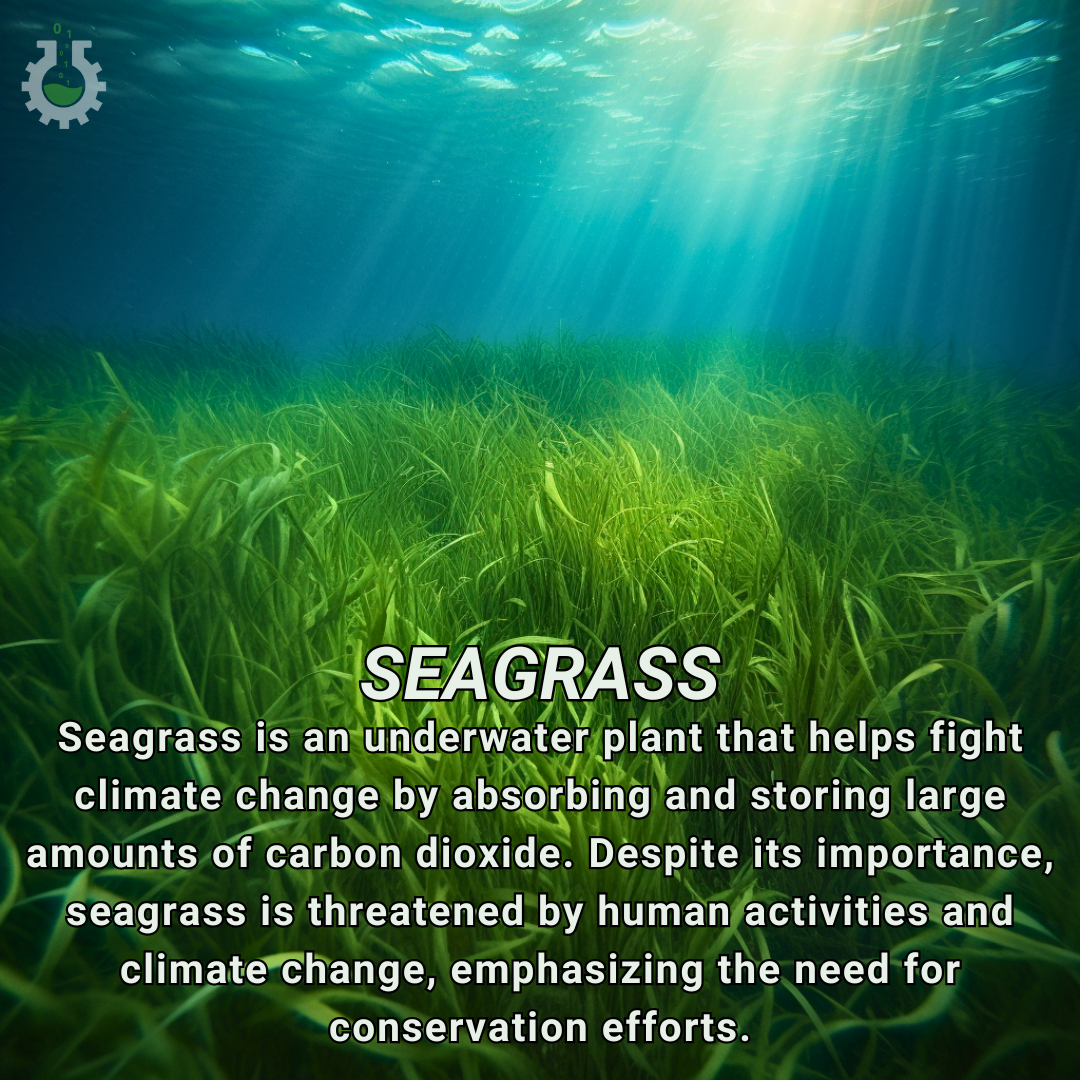April 24, 2024
Climate Change Poster Collection of the Day – Seagrass
Book a Demo
Today’s Climate Change Poster Collection highlights Seagrass, a type of underwater flowering plant, is often overlooked when discussing solutions to climate change. However, these unassuming marine plants play a surprisingly significant role in mitigating the effects of global warming. Found in shallow coastal waters around the world, seagrass meadows are not only visually stunning but also serve as powerful carbon sinks, absorbing and storing vast amounts of carbon dioxide from the atmosphere.
Research has revealed that seagrass has an extraordinary capacity to sequester carbon, far surpassing that of terrestrial forests. Studies have shown that seagrass meadows can store up to 83,000 metric tons of carbon per square kilometer, which is approximately twice the amount stored by forests on land. This remarkable ability to capture and store carbon makes seagrass an essential ally in the fight against climate change.
In addition to their carbon storage capabilities, seagrass meadows provide numerous other ecological benefits. They act as natural barriers against coastal erosion, protecting shorelines from the damaging effects of waves and storms. Seagrass also filters water pollutants, improving water quality and clarity in the surrounding areas. Furthermore, these underwater meadows serve as critical habitats for a wide variety of marine life, including fish, crustaceans, and other organisms, thus supporting biodiversity and the health of marine ecosystems.
Despite their immense value, seagrass meadows are under severe threat from various human activities. Coastal development, pollution, and the effects of climate change itself are causing the rapid decline of seagrass populations worldwide. Dredging, land reclamation, and the construction of seawalls and other coastal infrastructure can directly destroy seagrass habitats. Additionally, nutrient pollution from agricultural runoff and sewage discharge can lead to the overgrowth of algae, which smothers seagrass and blocks the sunlight it needs to survive. Rising sea temperatures and ocean acidification, both consequences of climate change, further exacerbate the stress on seagrass ecosystems.
As we strive to find effective solutions to the climate crisis, it is crucial that we recognize the immense value of seagrass and take action to protect and restore these vital ecosystems. Governments, conservation organizations, and local communities must work together to implement policies and practices that prioritize the preservation of seagrass meadows. This can include establishing marine protected areas, regulating coastal development, and reducing nutrient pollution from land-based sources.
Moreover, efforts to restore degraded seagrass habitats should be encouraged and supported. Seagrass restoration projects have shown promising results in various parts of the world, demonstrating that it is possible to revive these ecosystems and enhance their carbon storage potential. By actively engaging in seagrass conservation and restoration, we can harness the power of these underwater meadows to combat climate change while simultaneously protecting biodiversity and the overall health of our oceans.
The surprising role of seagrass in mitigating climate change cannot be overstated. These unassuming marine plants are true heroes in the fight against global warming, quietly absorbing and storing vast amounts of carbon dioxide from the atmosphere. As we work towards a more sustainable future, it is essential that we recognize the value of seagrass and take action to protect and restore these vital ecosystems. By doing so, we not only contribute to the mitigation of climate change but also ensure the health and resilience of our oceans for generations to come.
Discover an inspiring collection of climate change poster.



